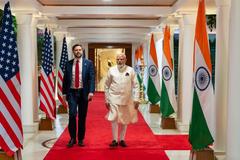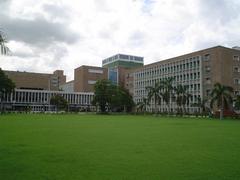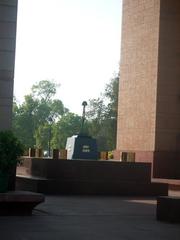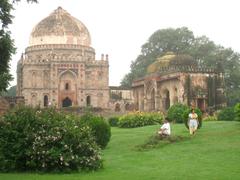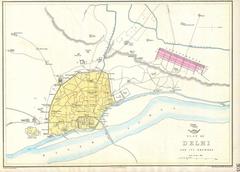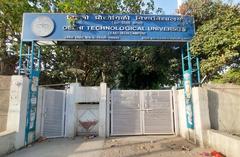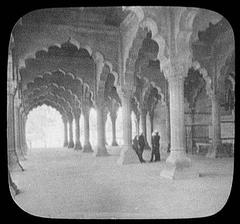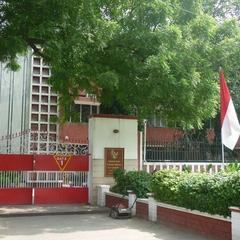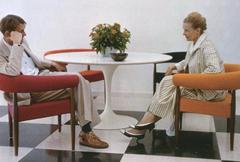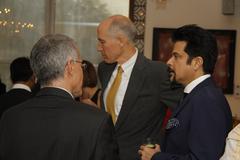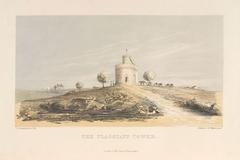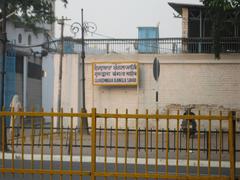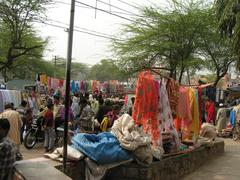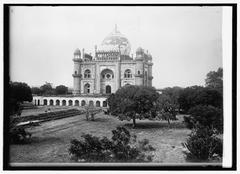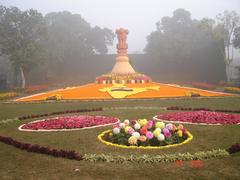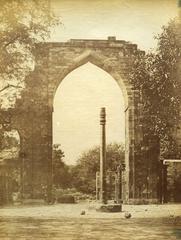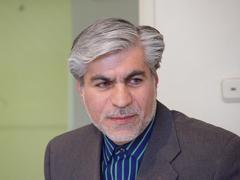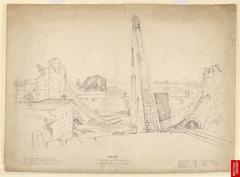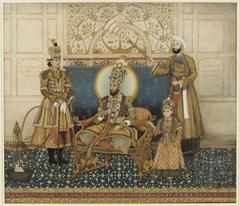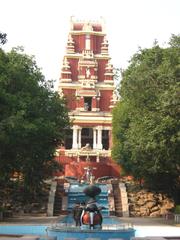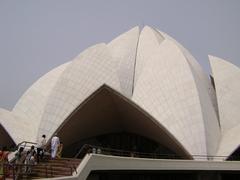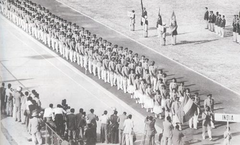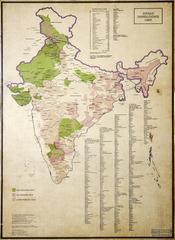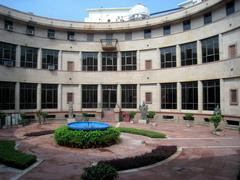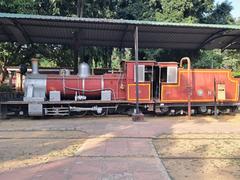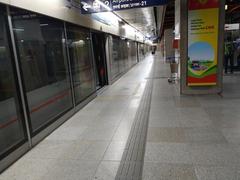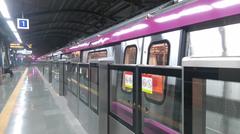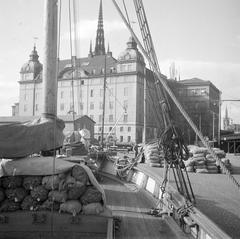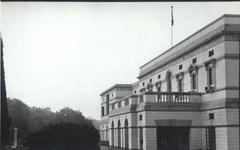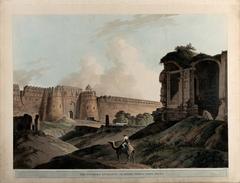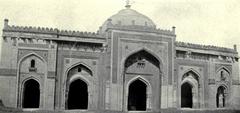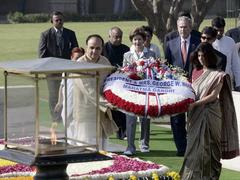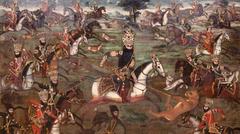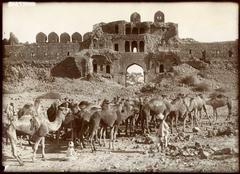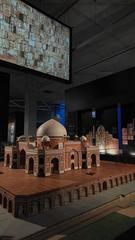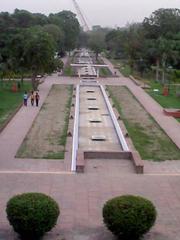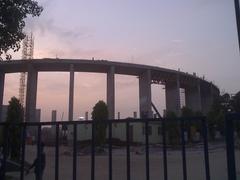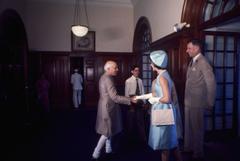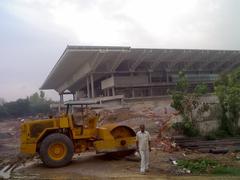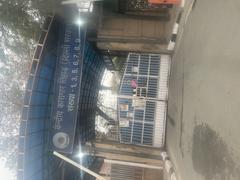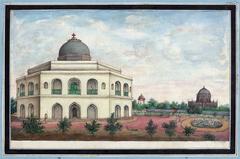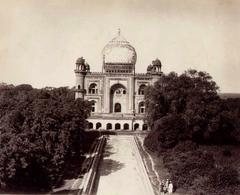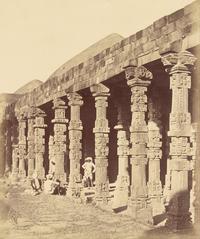National Gallery of Modern Art, New Delhi: Complete Visitor Guide
Date: 14/06/2025
Introduction
The National Gallery of Modern Art (NGMA) in New Delhi is a premier cultural institution that offers an immersive experience of India’s modern and contemporary art. Established in 1954 and housed in the architecturally significant Jaipur House, NGMA is both a repository of over 14,000 artworks and a hub for education, research, and cultural exchange. Visitors can expect to encounter masterpieces by celebrated artists like Raja Ravi Varma, Amrita Sher-Gil, and Rabindranath Tagore, alongside a vibrant schedule of exhibitions, workshops, and public programs that reflect the dynamic evolution of Indian art (TravelSetu; YoMetro; Google Arts & Culture).
With its blend of historical significance, architectural splendor, and accessibility—located near India Gate and easily reached by metro or taxi—NGMA is a must-visit for anyone interested in India’s artistic heritage or seeking a culturally enriching experience in Delhi. This comprehensive guide provides all you need to know about NGMA’s history, collections, visiting hours, ticketing, facilities, educational initiatives, and nearby attractions.
Table of Contents
- Introduction
- Historical Background and Evolution
- Visiting Information
- Architectural Significance
- Collections and Exhibitions
- Educational Programs and Community Outreach
- Visitor Experience & Practical Tips
- Frequently Asked Questions (FAQ)
- Visual Suggestions
- Internal Links
- Conclusion & Final Tips
- References
1. Historical Background and Evolution
Origins and Establishment
NGMA was conceptualized post-Independence as a way to foster and showcase India’s evolving artistic identity. Officially inaugurated on March 29, 1954, it became India’s premier modern and contemporary art museum, under the Government of India’s Ministry of Culture (TravelSetu; YoMetro).
Architectural Heritage
Jaipur House, originally built in 1936 for the Maharaja of Jaipur, was designed by Sir Arthur Blomfield with input from Sir Edwin Lutyens. The house features a unique hexagonal plan and blends colonial and Indian architectural elements, with red sandstone, marble, a central dome, and elegant jali work (TripGuruGo; Agate Travel).
Collection Development
The initial collection focused on Indian masters such as Raja Ravi Varma and Abanindranath Tagore. Over time, NGMA expanded to include works by Amrita Sher-Gil, Rabindranath Tagore, Jamini Roy, M.F. Husain, and Tyeb Mehta—reflecting over a century of artistic innovation (Holidify; Travelers Guider).
Renovation and Modernization
A major expansion in 2009 increased gallery space to approximately 12,000 square meters and introduced conservation labs, audio-visual rooms, and digital initiatives, making NGMA a world-class institution (TravelSetu).
2. Visiting Information
Visiting Hours
- Tuesday to Sunday: 10:00 a.m. – 5:00 p.m.
- Closed: Monday and public holidays
(Delhi Travel; Thrillophilia)
Ticket Prices
- Indian Adults: INR 20
- Foreign Nationals: INR 500
- Students (with valid ID): Free
- Children below 15 years: Free
- Professional Photography Permit: INR 1000 per picture
Check the official NGMA website for current rates and special offers.
How to Reach
- Metro: Central Secretariat station (Yellow & Violet lines), short rickshaw or walk to NGMA
- Bus: Routes to India Gate or Central Secretariat
- Car/Taxi: Located on Rajpath, limited paid parking nearby (TransIndiaTravels)
Facilities & Accessibility
- Wheelchair accessible with ramps, elevators, and staff assistance
- Restrooms, drinking water, and a café available
- Museum shop with art books and souvenirs
- Guided tours upon prior booking
- Photography without flash allowed in most areas; check signage for restrictions
Nearby Attractions
- India Gate
- National War Memorial
- Rashtrapati Bhavan
- Rajpath
- National Museum
- Lodhi Gardens
These landmarks can be visited on the same day as NGMA for a full cultural itinerary.
3. Architectural Significance
Jaipur House is a prime example of Indo-European architecture, featuring a central dome, sweeping colonnades, and symmetrical wings. The 2009 expansion added modern exhibition spaces while preserving the original design harmony (Scribd Case Study). Outdoor sculpture gardens and natural lighting enhance the visitor experience (Tour My India).
4. Collections and Exhibitions
Permanent Collection
NGMA’s collection spans over 17,000 works, including:
- Paintings by Raja Ravi Varma, Amrita Sher-Gil, Rabindranath and Abanindranath Tagore, Jamini Roy, and Nandalal Bose
- Sculptures in bronze, stone, wood, and contemporary materials
- Works on paper, including early photography (Lala Deen Dayal, Raghu Rai)
- Installations and digital/new media art
(Google Arts & Culture; Map Academy)
Temporary and Special Exhibitions
NGMA regularly hosts thematic and international exhibitions, such as:
- “Shakti: Fair and Fierce” (exploring feminine power in Indian art)
- “Roots and Routes” (civilizational expressions)
- International collaborations and retrospectives
(NGMA Exhibition Page; Enroute Indian History)
Digital Resources
- Virtual tours and online exhibitions via Google Arts & Culture
- Thematic online exhibits and multimedia guides
(Holidify)
5. Educational Programs and Community Outreach
Art Education & Outreach
NGMA offers workshops, lectures, and community projects to engage students, teachers, and families. The annual Summer Art Workshop for Children is a popular initiative that nurtures creativity (NGMA official history; NGMA news).
Academic Resources & Research
- Art Reference Library and Documentation Centre (under renovation)
- Lectures, seminars, and conferences with leading artists and historians
(Map Academy)
Thematic Exhibitions & Special Events
NGMA’s calendar includes national and international exhibitions, retrospectives, and events for International Museum Day and other cultural observances (Press Information Bureau).
Public Programs & Community Projects
NGMA integrates performing arts, literary events, and community collaborations, particularly engaging underrepresented groups through partnerships with local schools and NGOs (NGMA Bengaluru).
Accessibility & Inclusivity
Fully wheelchair accessible, with trained staff and family-friendly guidelines. Advance notice is recommended for visitors with special needs (Delhi Travel).
6. Visitor Experience & Practical Tips
Gallery Layout & Navigation
Spread over three floors and multiple wings, NGMA’s galleries are organized both chronologically and thematically for a coherent art journey (Wikipedia). Guided tours and curator-led walks are highly recommended (TravelSetu).
Interactive and Digital Experiences
- Online exhibits and virtual tours for remote exploration (Google Arts & Culture)
- Multimedia guides and accessible digital events
Getting There
- Metro: Central Secretariat is closest (TransIndiaTravels)
- Airport: 20 km from Indira Gandhi International Airport (approx. 30 minutes by taxi)
- Train: 4.5 km from the nearest railway station
Visitor Tips
- Best time: November to February for pleasant weather (Tripoto)
- Allocate 2–3 hours for a comprehensive visit
- Follow gallery etiquette: maintain silence, avoid touching art, supervise children
- Check NGMA official website for updated information
7. Frequently Asked Questions (FAQ)
Q: What are NGMA’s visiting hours?
A: Tuesday–Sunday, 10:00 a.m.–5:00 p.m.; closed Mondays and public holidays.
Q: How much are tickets?
A: Indian adults INR 20, foreign nationals INR 500, students and children enter free.
Q: Is the gallery wheelchair accessible?
A: Yes, with staff assistance available.
Q: Is photography allowed?
A: Permitted without flash in many areas; restricted in some galleries. Professional photography requires a permit.
Q: Are guided tours available?
A: Yes, arranged in advance or during special programs.
8. Visual Suggestions
- Photos of Jaipur House exterior and interior galleries (“National Gallery of Modern Art New Delhi facade”, “Interior exhibition space at NGMA New Delhi”)
- Images from workshops and events
- Embed virtual tours (Google Arts & Culture)
- Map highlighting NGMA’s location
9. Internal Links
- Related articles: “Top Museums in New Delhi”, “Guide to New Delhi Historical Sites”, “Indian Modern Art Movements Explained”
- Explore features on contemporary Indian artists at NGMA
10. Conclusion & Final Tips
The National Gallery of Modern Art, New Delhi, is more than a museum—it is a vibrant cultural beacon that chronicles and celebrates India’s modern artistic evolution. With thoughtfully curated galleries, dynamic exhibitions, inclusive educational programs, and accessible facilities, NGMA guarantees a memorable and enriching visit for all. Strategically located near major Delhi landmarks and easily accessible by public transport, it stands as an essential destination for art enthusiasts and travelers alike.
For the latest information on visiting hours, ticketing, and exhibitions, consult the official NGMA website. Enhance your visit by exploring nearby attractions and by using resources like the Audiala app for guided tours. NGMA’s blend of history, innovation, and community engagement makes it a cornerstone of India’s cultural landscape (TripGuruGo; Google Arts & Culture; TravelSetu; Delhi Travel).
11. References
- TravelSetu
- TripGuruGo
- Holidify
- NGMA official history
- Delhi Travel
- Google Arts & Culture
- Agate Travel
- Enroute Indian History
- Tripoto
- Scribd Case Study
- Map Academy
- Thrillophilia
- TransIndiaTravels
- NGMA news
- Press Information Bureau
- NGMA Bengaluru
- Wikipedia
